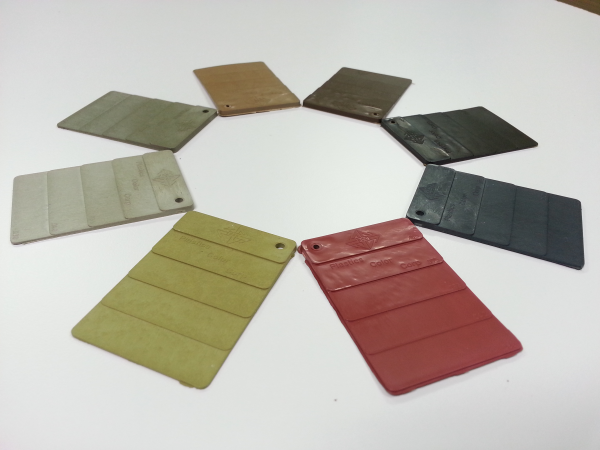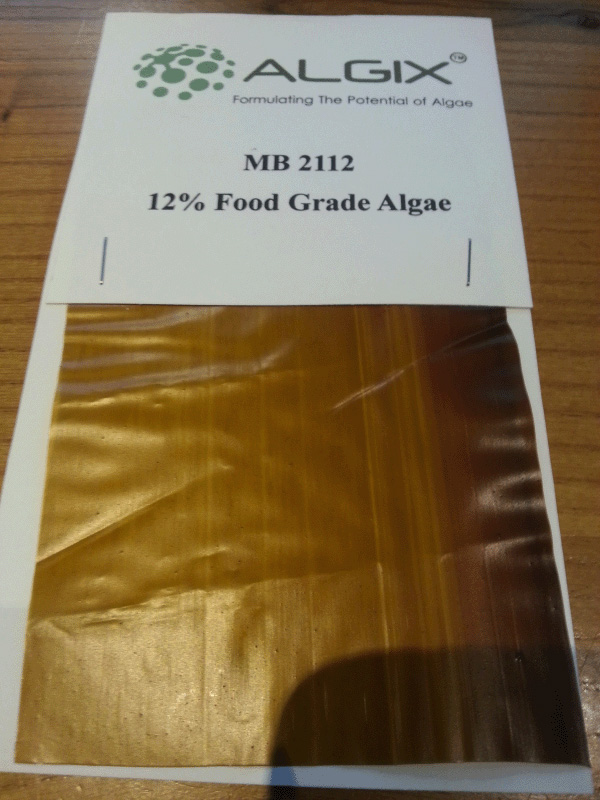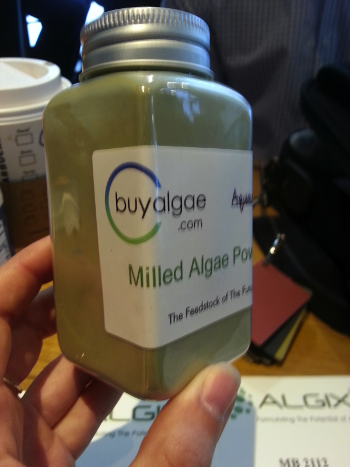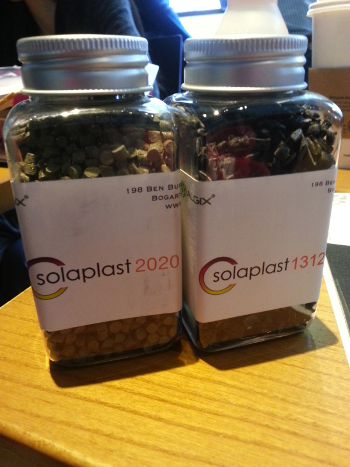Hey guys!
Sooo I met a new friend from ALGIX, the company that supplied me with the algae plastic to thermoform for display in our Bio Resin Show N Tell at Pack Expo, Chicago. He provided a ton of tantalizing tid bits about developments at ALGIX and its subsidiaries, Solaplast and ALGENT, which I will now share with you!
I have described the basic supply chain of this new aquatic biomass for conversion into bio-based and biodegradable plastics in previous posts; in a nut shell, algae waste is harvested from industry, dried and milled for compounded into pellets that can then be extruded into sheet for thermoforming or injection molding. But now that I have all the details, the process is much more fascinating, and much more complex!
First of all, the company responsible for harvesting the aquatic biomass for compounding is a subsidiary of ALGIX called ALGENT. Based in Marion Junction, AL, this firm has “developed algae harvesting, dewatering, and drying systems for producing dry algae biomass for use in bio-products like bioplastics.” Targeting aquaculture operations in the southeast that produce excessive amounts of nuisance algae, like fish farming, ALGENT provides farmers with an alternative to chemical poisoning when it comes to managing the algae waste generated from their fish farms. But let me back up a second: it is estimated that there is about 90,000 acres of active fish ponds growing algae biomass from excess nutrients (eutrophication). According to my new friend at ALGIX, for every pound of feed you produce a pound of fish and a pound of algae waste. As such, it is estimated that these farms produce close to one billion pounds of dry algae biomass annually, all of which is a nuisance and cost to dispose of for the farmers. By developing a method for efficiently removing the microalgae from the ponds and an infrastructure to dewater and dry the material before decomposition, ALGENT equips aquaculture farms with the mechanisms to generate a low cost feedstock for bio-products from a former waste product. How radical is that?!?
Next up, Solaplast: Another subsidiary of ALGIX, which is “a bioplastic compounding company that uses patent-pending technologies from Kimberly-Clark and the University of Georgia for the formulation and production…of bioplastic resins from various types of aquatic biomass.” For Solaplast, research and product development is aimed at producing biodegradable and bio-based plastics for a variety of markets, including disposable packaging, agriculture & horticulture products, carpet and flooring components, construction materials, and consumer goods and electronics. As an aside, did you happen to catch this news bit, announcing that Cereplast patents algae plastic? According to my friend at ALGIX, Kimberly-Clark originally filled the patent pertaining to cultivating aquatic biomass for biodegradable diapers in 2008, clearly before Cereplast. Kimberly-Clark has since licensed the technology to ALGIX and its subsidiaries and ALGIX assumes to it will license the technology to Cereplast, should an agreement be reached. Beats me!
Back to Solaplast—it is developing a range of algae blended thermoplastic grades of resins for use in both durable and compostable applications. Above when I list the targeted markets, an example of a durable application would be replacing the carpet backing with an algae / plastic blend, reducing the amount of non-renewable resources used in carpet backing; an example of a compostable application would be agricultural mulch films, which are placed over new seedlings acting as greenhouses and catalyzing germination. Clearly the compostable properties of these algae plastic blends i.e. algae + PLA or other, has its merits in this context.
The conversion of raw algae biomass (from ALGENT, its aquaculture partners, and other algae feedstocks) occurs at the Solaplast facility in Meridian, MS, where the “raw material is milled to an ultra fine particle size and conveyed to large twin screw extrusion compounding lines.” The pelletized bioresins produced are then packaged and shipped to the secondary converter or end users for conversion into final product. Got it?
Sooo check out these pretty pictures of new algae plastic! AND look at the pretty colors!!!!

Pictured above: colored injection molded samples of algae plastic blends, durable and biodegradable

Pictured above: flexible algae plastic blend for food packaging

Pictured above: Dried and milled algae powder for bioproducts

Pictured above: Solaplast algae plastic blend pellets, durable and biodegradable
